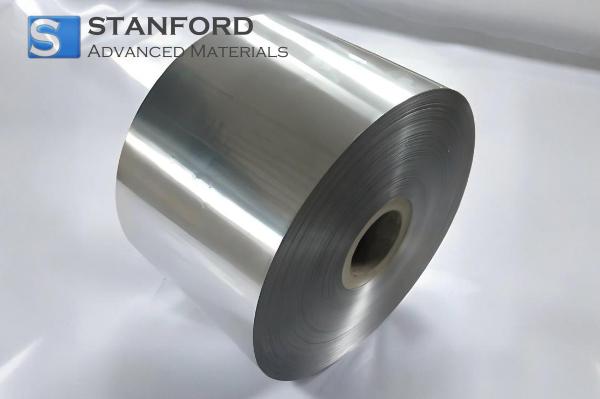Radon and Your Health: What to Know about Radon
Radon is an often-overlooked element with significant implications for human health. To keep your house safe and healthy, it is essential to understand what radon is, its properties, and the ways it can affect the living environment of your house. This article will discuss the nature of radon, its chemical and physical characteristics, its common uses, how it forms, and practical ways to protect oneself from exposure.
Introduction to the Element
It is a noble gas by class on the periodic table, represented by the atomic number 86 and symbolised as Rn. Since radon belongs to the noble gases, it is colourless, odourless, and tasteless, and therefore its presence cannot be detected without proper instruments. It is formed as part of the decay chain of uranium and thorium, commonly found in soil, rock, and groundwater.
Although chemically inert, radon is a radioactive substance, which means it constantly undergoes decay to other radioactive elements, emitting ionising radiation in the process. It is this property that makes radon so particularly hazardous to human health when it builds up in enclosed spaces such as homes, schools, and workplaces.
Chemical Properties Description
The general characteristics of noble gases include chemical inertness; hence, radon is chemically stable and unreactive. Normally, it does not easily form compounds, although with highly electronegative elements like fluorine and oxygen under controlled conditions in laboratory settings, it forms some rare chemical compounds. Its chemical inertness contributes to its accumulation in confined areas because it does not bind with other elements and remains gaseous.
The most important “chemical property” of radon, from a health standpoint, is its radioactivity: it undergoes alpha decay to form polonium-218, which subsequently decays to a series of short-lived radioactive isotopes called collectively radon progeny or daughters. These decay products can attach to dust and other particles, which if inhaled, can deposit radiation directly in the lungs.
Physical Properties
Physically, radon is a heavy gas, considerably denser than air. At standard temperature and pressure, it is colourless, odourless, and tasteless, making it invisible and undetectable without proper testing equipment. Because of its density, it tends to accumulate in low-lying areas like basements or ground floors, most especially in buildings with poor ventilation.
Radon is soluble in water, although with a limited capacity; therefore, it can be found as well in groundwater and sources of drinking water. This physical property of radon explains the fact that this gas can penetrate indoor air and systems used to supply water, thus creating multiple exposure pathways for humans.
Common Uses
It does not share many of its practical applications with other elements due to its radioactivity and the health risks it poses. Historically, it was used in certain medical therapies for treating cancer, in the forms of radon baths and localized radiation therapy. However, safer alternatives have largely replaced radon in modern medicine. Today, its primary significance lies in environmental monitoring, scientific research, and radiation detection studies rather than widespread practical applications.
Preparation Techniques
It is not artificially produced for industrial purposes but results naturally from the radioactive decay of uranium, thorium, and radium in soil and rock. Radon migrates through cracks and porous materials and enters buildings through foundations, basements, and water supplies. It can be isolated for study in laboratories but, for the most part, preparation methods are not of concern-the primary interest is in mitigating naturally occurring radon.
How to Protect Yourself
Health Effects of Radon
Exposure to radon is a significant health risk because, after smoking, it is the second leading cause of lung cancer. When inhaled for extended periods, the alpha particles of the decay products of radon can inflict damage upon the tissue of the lungs and DNA. The higher the concentration and length of time someone is exposed, the more at risk they are. Children, the elderly, and anyone with preexisting lung disorders are highly vulnerable.
Radon in Buildings
Radon most often enters a building through cracks in the foundation, gaps around pipes, or other structural openings. Poorly ventilated areas, especially basements, can have radon accumulate at levels considerably greater than in outdoor air. First steps in reducing indoor radon concentrations include ensuring adequate ventilation and sealing entry points.
Radon in Drinking Water
Apart from air, it is also present in water, especially drinking water from private wells drawing water directly from groundwater. The concentrations are usually less in water than in indoor air, and ingestion through prolonged use may contribute to internal radiation exposure. Treatment of water through aeration or activated carbon filtration reduces radon levels in drinking water.
Testing and Protection
Testing remains the only reliable method of detecting radon. Homeowners can conduct short-term kits for screening purposes or long-term tests that will provide a better estimate of the average exposure. If elevated levels are found, professional mitigation strategies, such as sub-slab depressurisation systems, improved ventilation, and sealing of entry points, can significantly reduce indoor radon concentrations. For more information, please check Stanford Advanced Materials (SAM).
Frequently Asked Questions
Is radon dangerous?
Yes, long-term exposure to high levels of radon significantly raises the risk of lung cancer.
Can radon be detected without special equipment?
No, radon is colourless, odourless, and tasteless. Only testing kits or professional detectors can accurately measure its presence.
Can radon levels be reduced?
Yes, proper ventilation, sealing of cracks, and mitigation systems can reduce the levels of radon in homes and buildings quite effectively.
Do all homes have radon?
It is everywhere, but in different concentrations. Geographic location, type of building, and local geology are factors affecting indoor levels.
Although colourless, odourless, and invisible, radon's health effects are real. Awareness, testing, and proactive mitigation are critical in terms of safety in indoor settings. Understanding properties, pathways, and risks can provide each individual with relevant measures that may be taken to safeguard themselves and family members from this silent yet dangerous radioactive gas.

 Bars
Bars
 Beads & Spheres
Beads & Spheres
 Bolts & Nuts
Bolts & Nuts
 Crucibles
Crucibles
 Discs
Discs
 Fibers & Fabrics
Fibers & Fabrics
 Films
Films
 Flake
Flake
 Foams
Foams
 Foil
Foil
 Granules
Granules
 Honeycombs
Honeycombs
 Ink
Ink
 Laminate
Laminate
 Lumps
Lumps
 Meshes
Meshes
 Metallised Film
Metallised Film
 Plate
Plate
 Powders
Powders
 Rod
Rod
 Sheets
Sheets
 Single Crystals
Single Crystals
 Sputtering Target
Sputtering Target
 Tubes
Tubes
 Washer
Washer
 Wires
Wires
 Converters & Calculators
Converters & Calculators
 Write for Us
Write for Us




 Chin Trento
Chin Trento



